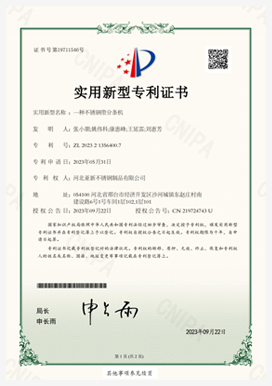Compact Combine Harvester Solutions for Small Farms and Efficient Crop Harvesting
The Rise of Small Farm Combine Harvesters Transforming Agriculture for the Future
In the ever-evolving landscape of agriculture, technology plays an integral role in enhancing productivity and efficiency. Among the innovations that have transformed the farming industry, small farm combine harvesters stand out as a game changer for small-scale farmers. These compact machines combine the processes of reaping, threshing, and winnowing into one, significantly improving operational efficiency and reducing labor costs. This article explores the features, benefits, and impacts of small farm combine harvesters on agriculture.
Understanding Small Farm Combine Harvesters
Small farm combine harvesters are designed specifically for smaller agricultural operations. Unlike their larger counterparts, which are typically used on expansive farms, these machines offer a more manageable size that suits the needs of smallholders. They are equipped with advanced technology to ensure thorough harvesting while maintaining the quality of the crop. Modern models may include features such as GPS guidance systems, efficient fuel consumption mechanisms, and user-friendly interfaces, making them accessible even for those with limited technical expertise.
Benefits of Using Small Farm Combine Harvesters
1. Increased Efficiency One of the most notable advantages of using small farm combine harvesters is the time-saving aspect. Harvesting crops manually can be labor-intensive and time-consuming. With these machines, farmers can cover larger areas in a shorter period, allowing them to focus on other crucial aspects of their operation, such as planting and crop rotation.
2. Cost-Effectiveness While the initial investment in a combine harvester can be significant, the long-term savings often outweigh the costs. Manual harvesting requires more labor, which can be costly and challenging to manage, especially during peak harvesting seasons. By investing in a small combine harvester, farmers can reduce labor costs, minimize post-harvest losses, and ultimately enhance their profitability.
3. Improved Crop Quality Harvesting at the right time is essential to maximize crop quality. Combine harvesters enable farmers to harvest crops at their optimal ripeness, reducing the risk of spoilage or damage. This ensures that the harvested grains maintain their quality, leading to better market prices and higher customer satisfaction.
4. Labor Shortages Mitigation In many regions, especially rural areas, there is a growing shortage of agricultural labor. This shortage can severely hinder farming operations and productivity. Small combine harvesters help address this issue by reducing the reliance on manual labor, allowing farms to operate more effectively even with fewer hands on deck.
small farm combine harvester

5. Versatility Many small combine harvesters are designed to handle a variety of crops, making them a versatile tool for farmers. Whether it’s grains, legumes, or oilseeds, these machines can be adapted to meet the specific needs of diverse agricultural systems.
Impact on Smallholder Farmers
The adoption of small farm combine harvesters has profound implications for smallholder farmers around the world. These machines empower farmers by providing them with the necessary tools to compete in an increasingly commercialized agricultural market. By boosting efficiency and productivity, smallholders can increase their output and improve their livelihoods.
Moreover, small farm combine harvesters cater specifically to the unique challenges faced by small-scale farmers, such as limited land and resources. This specialized equipment helps level the playing field, enabling smallholders to engage more effectively in local and global markets.
Challenges and Future Directions
Despite their many benefits, the adoption of small farm combine harvesters is not without challenges. Access to financing remains a significant barrier for many farmers who may struggle to afford these machines. Additionally, the training required to operate such technology is crucial to unlocking its full potential.
As agriculture continues to embrace innovation, partnerships between governments, non-governmental organizations, and the private sector can facilitate access to small farm combine harvesters. By providing education, financial assistance, and technical support, stakeholders can ensure that smallholders can reap the benefits of these transformative tools.
In conclusion, small farm combine harvesters represent a pivotal advancement in agricultural technology. Their ability to enhance efficiency, reduce costs, and improve crop quality makes them an invaluable asset for smallholders. As we look to the future, continued investment in this technology will enable small farmers to thrive, contributing to food security and sustainable development in a rapidly changing world.
Latest news
-
When to Upgrade Your Old Forage HarvesterNewsJun.05,2025
-
One Forage Harvester for All Your NeedsNewsJun.05,2025
-
Mastering the Grass Reaper MachineNewsJun.05,2025
-
How Small Farms Make Full Use of Wheat ReaperNewsJun.05,2025
-
Harvesting Wheat the Easy Way: Use a Mini Tractor ReaperNewsJun.05,2025
-
Growing Demand for the Mini Tractor Reaper in AsiaNewsJun.05,2025
